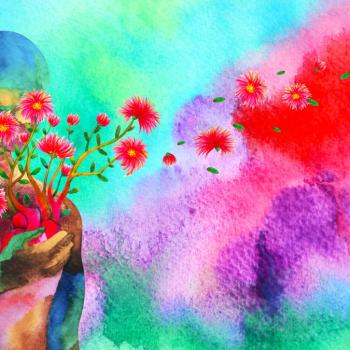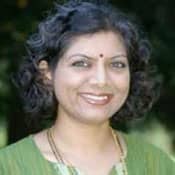June is a month for weddings and wedding anniversaries, both in India and America. This June is especially poignant for me because of my in-laws' fiftieth anniversary and our family's inability to be together for it. Hindus celebrate weddings during auspicious times; a specific time for the rituals is set depending on astrology, which takes into consideration the stars under which the bride and groom are born. Hotels and Hindu temples around United States are reserved for celebration of the sacred sacrament of marriage, just as marriage halls and mandaps are reserved in India; and in America, wedding planners thrive, as Shivani Vora reported in the New York Times. Yet the big question that I have about marriage from a Hindu American perspective is not what's in the news—about same-sex marriage—but about weddings involving partners of different faiths.
Recently, a member of the South Asian Lesbian Gay Association approached me as a member of the Hindu American Foundation, to seek our responses related to questions about same-sex marriage. HAF members and our leadership do not all share the same opinion on what is a hot-button issue this election year; after all, the Hindu way is to acknowledge our different beliefs and paths. Our response to the question "What are your thoughts on [President] Obama's endorsement of same-sex marriage?" started with this: "It is important to remember here that conservative opposition to same-sex marriage comes from their opposition to all same-sex relationships. This opposition may be rooted in their reading of the Bible or other scripture that condemns homosexuals to everlasting hell. Hindus, however, can find no such spiritual justification against homosexuals. The goal of life in Hinduism is not to go to heaven, but rather attain moksha, or the realization of one's true nature as being a spirit independent of the body and mind (which is where concepts such as hetero and homosexuality belong). Hinduism is unique in that it separates its religious texts into srutis, which address eternal truths and the path to moksha, and smritis, which deal with social issues, including marriage and which tradition holds are subject to change with time, place, and circumstance . . ."
The Hindu American Foundation is a human rights organization, with advocacy at its core. HAF has publicly said that any governmental rights and privileges that heterosexual couples enjoy, homosexuals, either individually or as couples, should as well. However, it is a religious community's decision to decide whether marriage as a sacrament is open to homosexual couples. Since Hindu Americans are not a single-issue community, whether Hindu Americans will be influenced by President Obama's or any candidate's endorsement of same-sex marriage is a personal choice.
Professor Arvind Sharma, a well-known Hindu academic and Birks Chair of Comparative Religion at McGill University in Montreal, Canada, provides a historical perspective. He said: ". . .save for the emphasis on renunciation, Hinduism is a sex-positive religion in relation to all the (other) three ends of human life—dharma, artha, kama . . . . This should not be taken to mean, however, that it also views homosexuality within the general field of sex in a positive light. Dharma and Artha literature is somewhat opposed to it; Kama literature is not opposed to it but is not markedly supportive either . . . The degree of opposition varies by text and those that do prescribe punishments are very context-specific. Thus, not only are Smritis subject to change, but there also appear to be no broad-based, harsh punishments advocated for homosexual activity in the ancient smritis. On the whole, ancient India seems to have largely ignored the phenomenon rather than actively persecute homosexuals with harsh punishment."
HAF's Board member and co-founder, Dr. Aseem Shukla's response to yet another question ("What role, if any, should religious institutions, traditions or beliefs have in the legal act of marriage?") reflects my stance for the current times.
But when I think of marriage in the Hindu-American context, it is not about history or the current context of same-sex marriage; it is of interfaith marriage, and especially the future. The Saptapadi—seven steps that the bride and groom take together around the sacred fire—refers to procreation. This ritual, beautifully described by the character of Gandhi in Richard Attenborough's biographical movie, is a common thread in all Hindu marriages, even most interfaith ones. The bride and groom take seven steps and make seven promises to one another, including that they will care for their children, but there is no clear mention in the vow of what faith the child or children will be.





